How to Identify a Red-Spotted Purple Butterfly
Updated: Apr. 25, 2023
Discover where to find a red-spotted purple butterfly. See what they look like and what host plants to grow to bring them into your yard.
A butterfly in your yard is always a welcome sight, but if that butterfly shimmers? Even better! The red-spotted purple butterfly has an iridescent sheen that makes it truly eye-catching. Here’s what you need to know about this pretty pollinator.
Meet the red admiral butterfly and learn how to attract them.
Red-Spotted Purple Butterfly Markings
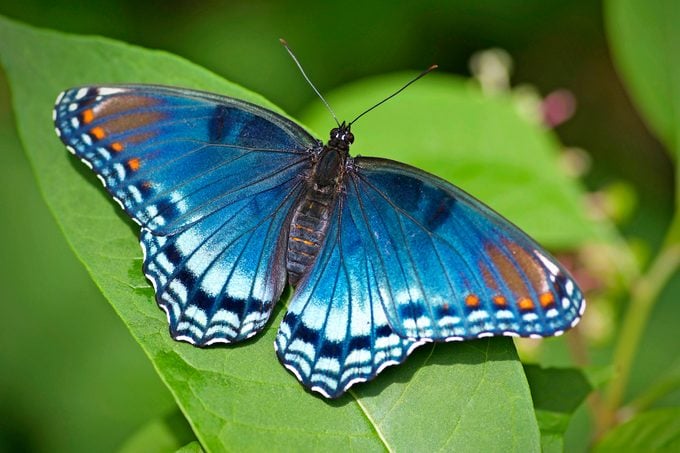
These gorgeous butterflies glimmer in the sunlight. From above, they are mostly black and iridescent blue with small orange spots on the wing tips. In addition, more red-orange markings are visible from below.
“I took this photo of a red-spotted purple butterfly (above) at Kelly’s Run Nature Preserve in Holtwood, Pennsylvania. It’s one of my favorite places to hike,” Birds & Blooms reader Nevin Shrom says.
We found 10 beautiful butterfly pictures you HAVE to see.
Where to Find a Red-Spotted Purple Butterfly
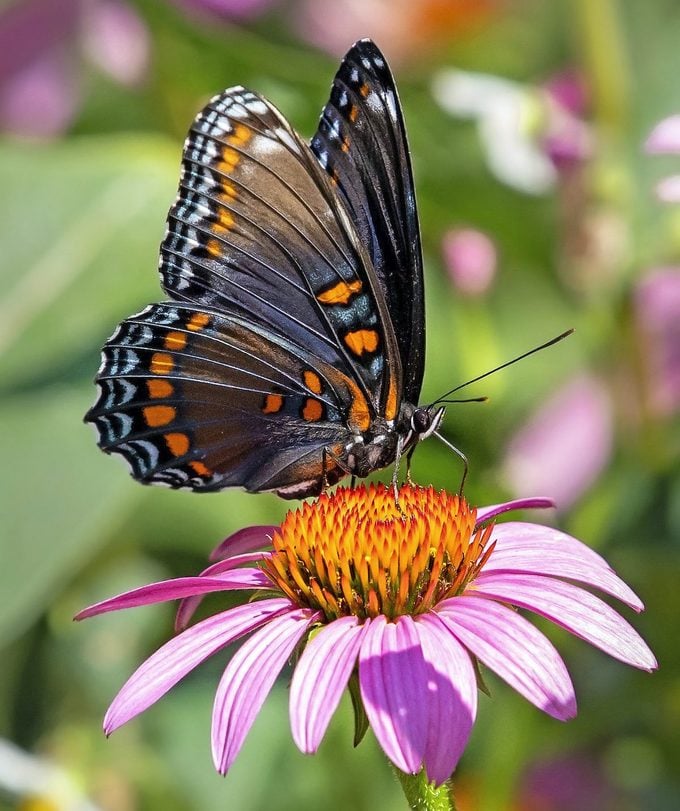
Red-spotted purples aren’t found throughout the whole United States, so your best bet of finding one is in the eastern part of the country. Additional populations are found in the Southwest as well. In those regions, you’re most likely to find one in wooded areas. They’re commonly found in suburbs.
“Discovering a new variety of butterfly in your garden is really exciting. This red-spotted purple (above) looked gorgeous fluttering around our blooming purple coneflowers,” Birds & Blooms reader Mike Brickl says.
You’re likely to spot moths anywhere you’ll find a red-spotted purple. Here’s how to tell the difference between moths vs butterflies.
What Do These Butterflies Eat?
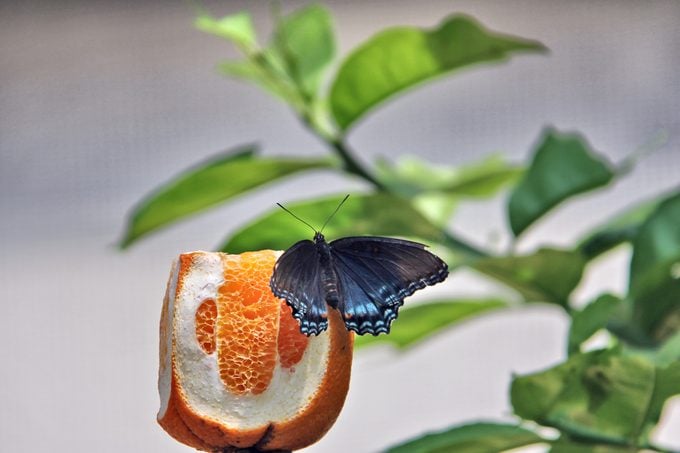
Flower nectar isn’t the preferred diet for these colorful fliers. Instead, to attract them to your yard, you’ll want to serve fruit. Offer them overripe bananas, citrus, apples or any other juicy fruit.
Here are 9 super-simple ways to attract butterflies.
Red-Spotted Purple Caterpillar
Red spotted purple caterpillars give little indication of the lovely creature they’ll grow up to be! The brown, green and white caterpillars have humps on their backs and dark-colored hornlike appendages.
Quiz: How many types of caterpillars can you identify?
Host Plants
Unlike a monarch butterfly, the red-spotted purple cannot be drawn to yards with milkweed plants. Cottonwoods, willows, wild cherries and other trees are their preferred nest plants.
Check out the top 10 butterfly host plants to attract pollinators.
Regional Forms
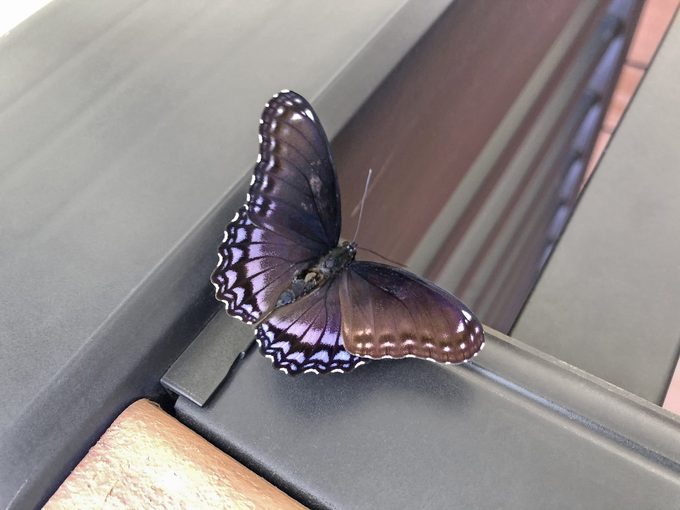
Question: “What’s this butterfly on my deck?” asks Birds & Blooms reader Linda Saverino of Hermitage, Pennsylvania.
Kenn and Kimberly Kaufman: The short answer is that this butterfly is usually called a red-spotted purple. But it’s also called red-spotted admiral, and that reflects an intriguing fact. This butterfly has a double identity, with two regional forms that look different. The one in your photo, the red-spotted purple, is widespread in the Southeast.
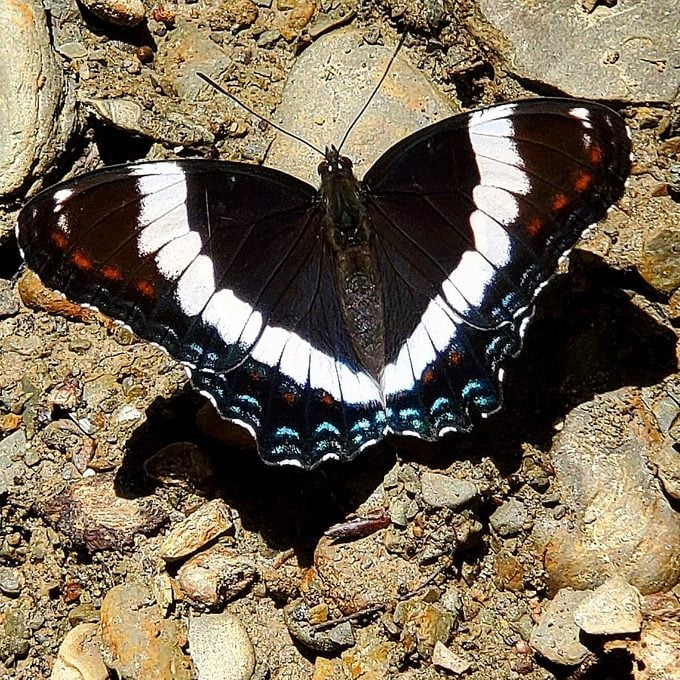
The other one, the white admiral (above), is found across Alaska, Canada, and parts of the northern states; it has a broad white band across black wings, and red spots on the hindwings. Where you are in Pennsylvania, you might see intermediates that share some markings of both forms, so it’s worth watching for them.




















